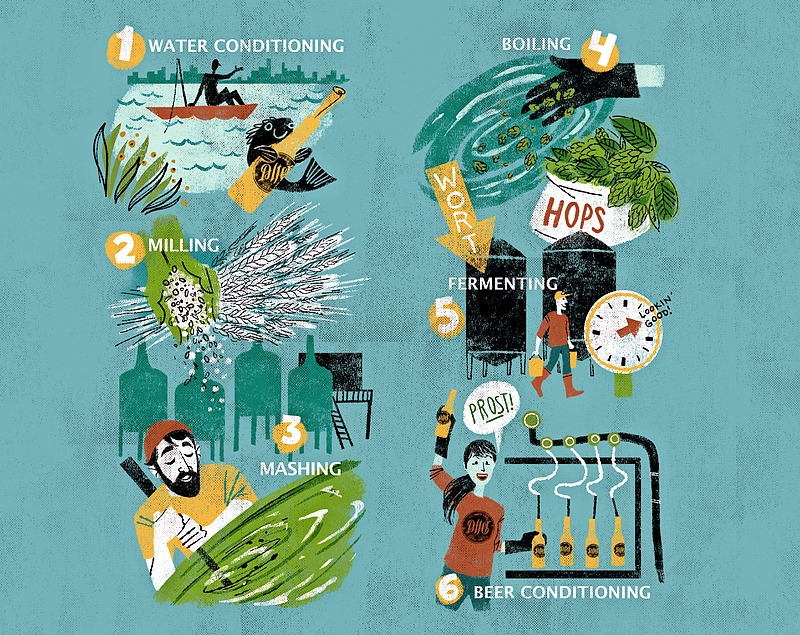Beer Science
By Mark Loehrke
July 2019 View more Featured

Even as they’ve overseen a bustling Downers Grove brewing operation that has ramped up production from around 750 barrels to just under 3,000 over the past three and a half years—and as they continue to finalize the build-out of a sprawling new riverfront brewpub set to open in downtown St. Charles by early 2020—cofounder/brewer Mark Hedrick and head brewer Matt McCowan have never let their focus stray from the foundational source of Alter Brewing Company’s impressive growth: the beer.
Combining a little bit of art (creatively tweaking ingredients and brewing variables to come up with new flavor profiles) and plenty of science (Alter has a microbiologist on staff to ensure the consistency and quality of every batch), Hedrick, McCowan, and their team take every beer in the Alter arsenal on a journey—from concept to can—along a clearly defined and highly intricate path.
Step 1: Water Conditioning
Because beer is mostly water, the liquid a brewer uses is critically important to the quality of the finished product. Alter uses carbon filters to turn Lake Michigan water into a good brewing base by removing things like chlorine and fluoride.
Step 2: Milling
The “grain bill” stage largely determines how the beer in question will taste, feel, and smell. Eighty-five to 90 percent of the bill will involve a base grain (wheat, barley, rye, etc.), with the remaining 10 to 15 percent being the specialty malts used to imbue the brew with specific flavor notes (think chocolate, coffee, etc.) and mouthfeel.
Step 3: Mashing
The grain and water are combined at 148 to 158 degrees for about an hour to extract the sugar from the grain and allow the resulting wort to sluice through a false bottom in the tank. The leftover grain makes for excellent livestock feed or compost.
Step 4: Boiling
Now it’s cooking. Heating things up to 212 degrees for about 60 to 90 minutes helps sterilize the unfermented liquid and gets out the proteins. This is also the stage when hops are added to the mix, as the boiling helps extract the oils that provide a beer with its flavor, aroma, and bitterness. After the boil, the beer is given a centrifugal whirlpool and “knocked out,” as the beer quickly goes one way (at 212 degrees) and water goes the other way (at 40 degrees) in a heat exchanger to get to a temperature of about 68 degrees.
Step 5: Fermenting
With the boiled wort at 68 degrees, yeast is added (“pitching”) to turn those sugars into CO2, alcohol, heat, and flavor over a period of about five to seven days (although the yeast in a lager will work for two to three months). This is also the point in the process when “dry-hopping” takes place, as fresh hops are added to the fermenter (one to four pounds per barrel) to give an IPA a jolt of extra aroma.
Step 6: Beer Conditioning
A process that started by conditioning the water ends by conditioning the nearly finished product, as carbonation is added and the beer matures in a bright tank for a few days. From there, it is quality-tested, packaged in kegs, bottles, or cans, and sent out to the world. Prost!


